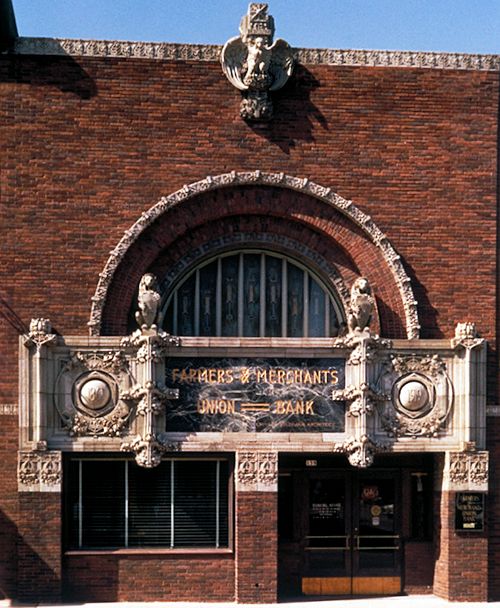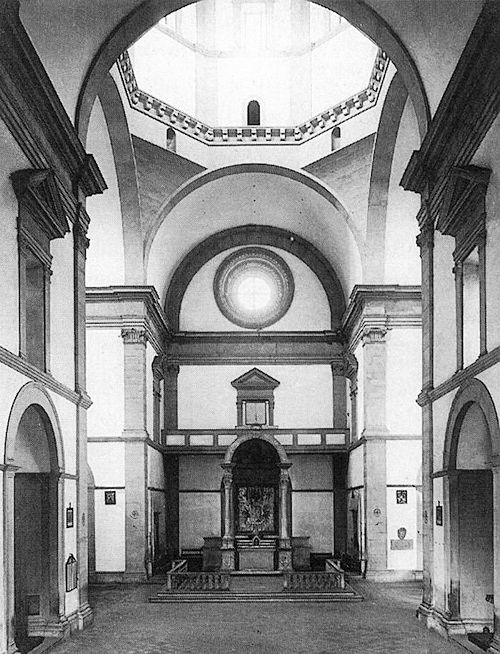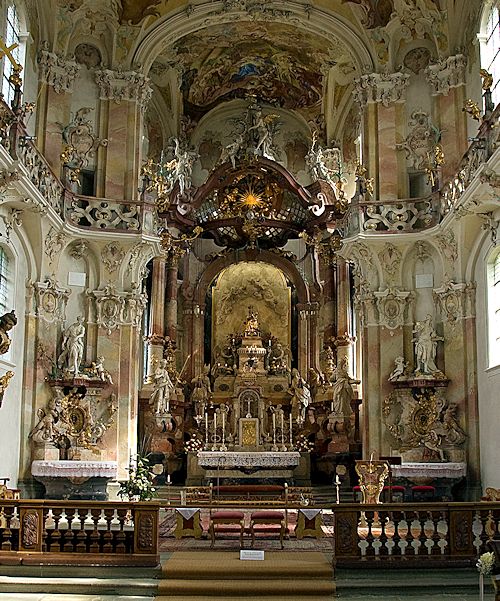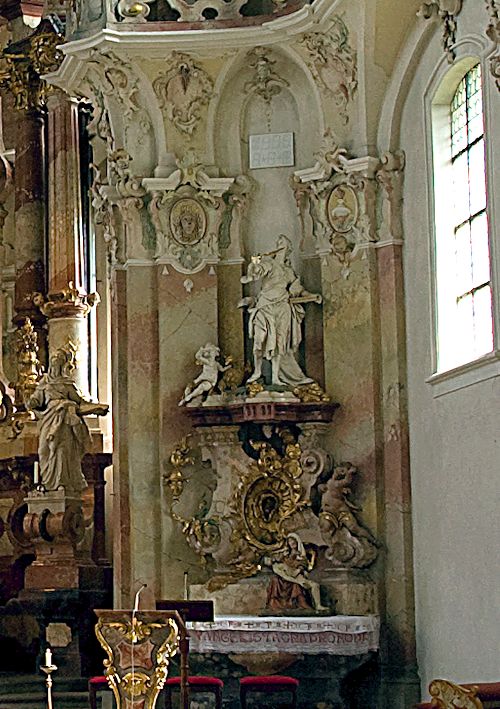the philadelphia school, deterritorialized | junkyard plus ultra |
|
|
|
Sullivan's Farmers' and Merchants' Union Bank in Columbus, Wisconsin, is exceptional in our recent architecture. The difficult duality is prominent. The plan reflects the bisected inside space which accommodates the public and the clerks on different sides of the counter
running perpendicular to the facade. On the outside the door and the window at grade reflect this duality: they are themselves bisected by the shafts above. But the shafts, in turn, divide the lintel into a unity of three with a dominant central panel. The arch above the lintel tends to reinforce duality because it springs from the center of a panel below, yet by its oneness and its dominant size it also resolves the
duality made by the window and the door. The facade is composed of the play of diverse numbers of parts--single elements as well as those divided into two or three are almost equally prominent--but the facade as a whole makes a unity.
|
The interior of the church of the Madonna del Calcinaio in Cortona is composed of a limited number of elements which are uninflected. Its windows and niches, pilasters and pediments, and the articulated elements of its altar, are independent wholes, simple in themselves and symmetrical in form and position. They add up to a greater whole. The interior of the pilgrimage church at Birnau in Bavaria, however, contains a diversity of inflections directed toward the altar. The complex curves of the vaults and arches, even the distortions of the pilaster capitals, inflect toward this center. The statues and the multi tude of fragmental elements of the side altars are inflected parts, asymmetrical in form yet symmetrical in position, which integrate into a symmetrical whole. This subordination of parts corresponds to Wölfflin's "unified unity" of the Baroque--which he contrasts with the "multiple unity" of the Renaissance.
|
www.quondam.com/40/4041i.htm | Quondam © 2020.04.10 |



